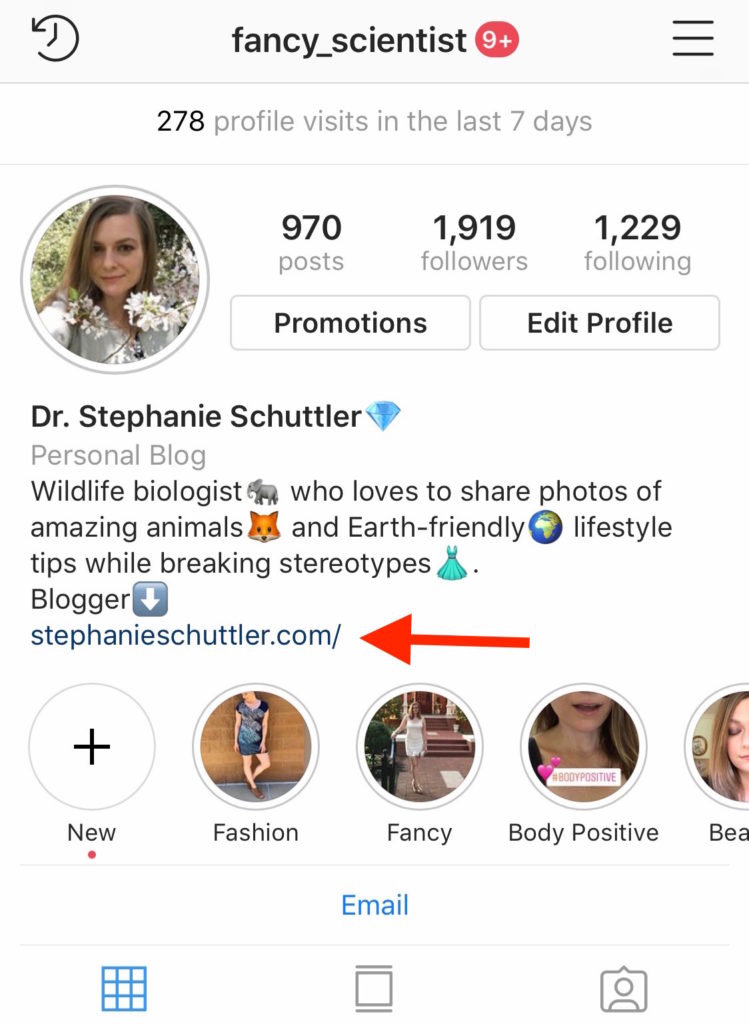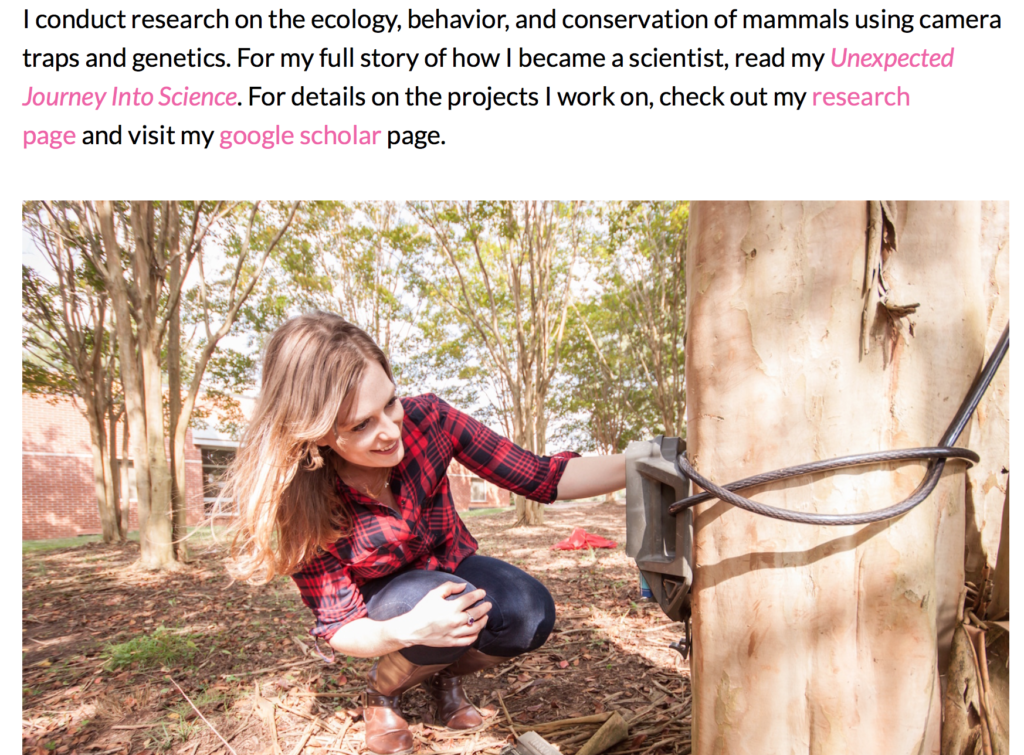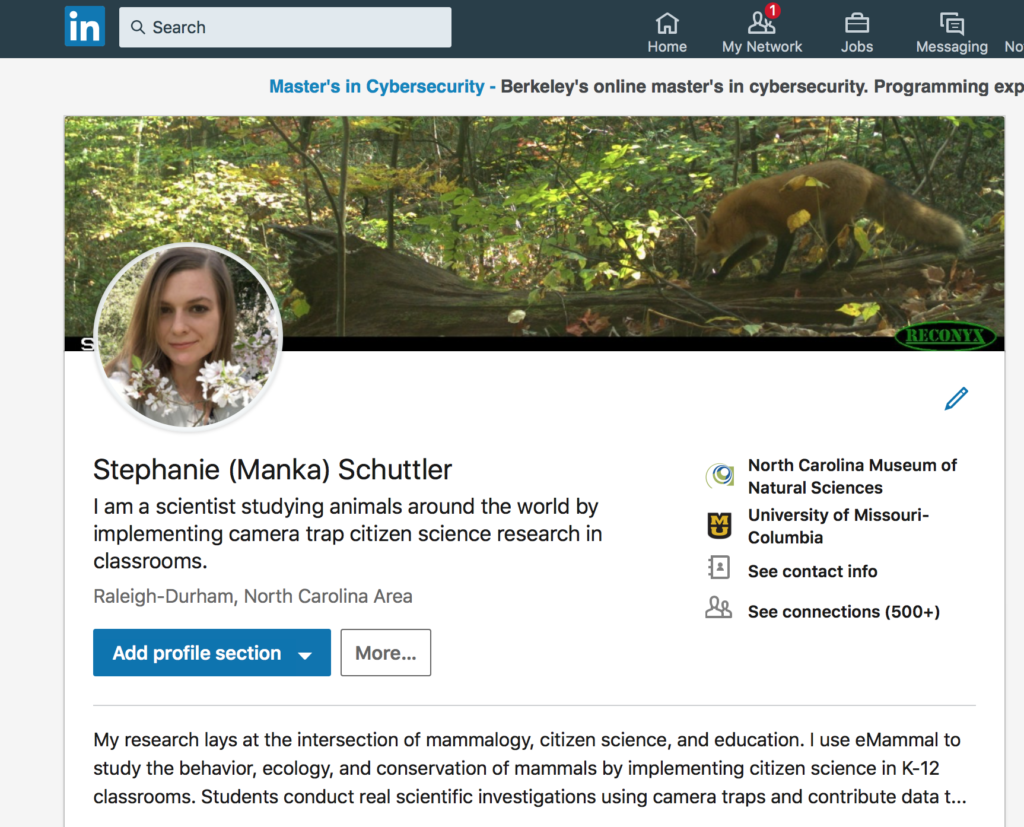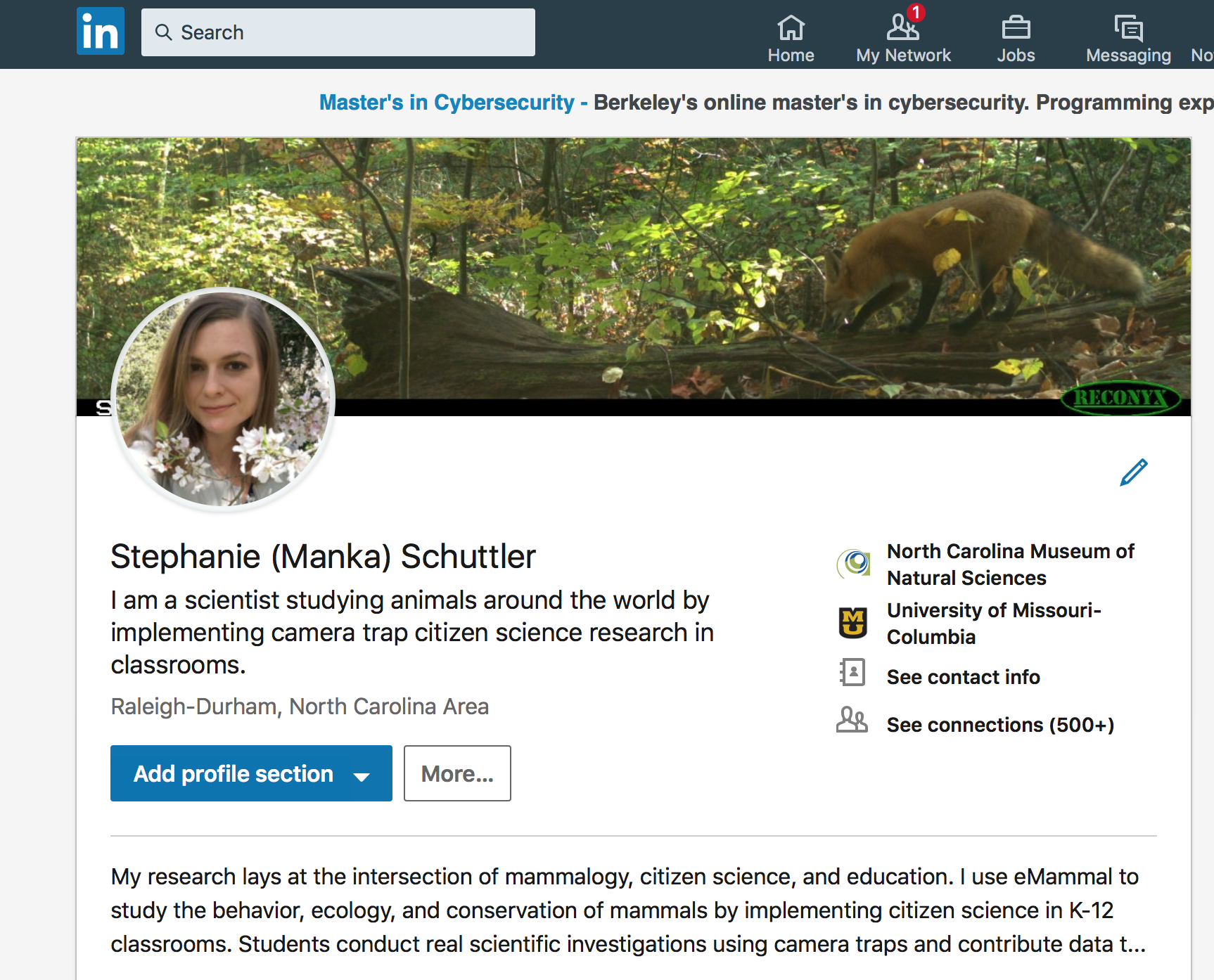*This post contains affiliate links. As a Bluehost affiliate, I earn from qualifying purchases. This means if you sign up with Bluehost, I get a small commission at no cost to you! Read my Affiliate Links Disclaimer.
For my Fancy Scientist series, I post photos and write up a short summary of a scientist who likes to be a little fancy. I find a lot of these scientists on social media, and I don’t want them to have to do any work for this, so I try to find a bio that I can use. However, I often have to ask for one. Having a bio is helpful to your career and quite honestly, I think every scientist needs one.
What Do I Mean By a Bio?
When I say bio, I don’t mean filling out the bio in that specific social media platform (although you should do that too). I mean a separate website that contains professional information about you. Your social media page doesn’t allow you enough characters to fully describe your research. It also pays to be cheeky and cute in these descriptions with emojis and hashtags, but this does not portray you well professionally. Enter bio.
A bio is a link to a separate website that at the very least has one page about you so someone can get more detailed information about your research. It essentially tells the reader that you are legit.
Say a reporter wanted to contact you about a story or another scientist wanted to connect and maybe collaborate with you, if they can’t find any websites that describe you, they are more likely to give up and find someone else.
I myself have done this for potential reviewers I wanted to recommend for my manuscript submissions! I will look someone up whose papers I cited a lot, try to find their full contact information, which is often required by the journal, and fall short. Honestly, there have been times where I have just moved on to someone else because I couldn’t find their info.
This is important if you are on social media for science communication purposes because the whole idea is to spread your message of science. Having an easy to read bio is a great way to get journalists interested in your research.

You want your bio to be short and succinct. Include absolutely no jargon at all – this means that your grandmother or a non-science friend could understand it. Even though I am a scientist, when I ask other scientists for their bios, quite often I have a hard time understanding their research because I don’t know their field’s jargon. Your bio should be a few sentences long and appear on the first page of your website or other hosting site.

Where Should You Put a Bio?
Paid Website
A paid website is what I recommend if you are in it for the long game (plan on staying in science indefinitely), want to do science communication or blog. Paying for your own website means you get your own URL, and you can design it however you want. With free websites and websites hosted by your institution, you will be limited by what you can do. If you’re at all thinking of doing your own website I highly recommend doing it from the beginning so you don’t have to eventually transfer everything over.
I transferred all of my content over to WordPress.org, which I recommend. It gives you so much freedom and it’s kind of fun once you get the hang of it. You can customize it to be however you want (like mine is pretty different then most scientists’ websites). Know that WordPress.org is different than WordPress.com, which is free. You can read about the differences here.
You will need a hosting site for WordPress.org and I use and recommend Bluehost. They have an online chat feature and are super helpful with any dumb questions you have when dealing with websites (I have lots). To get set up, you can click on the link below:
In addition to your bio, it’s also a good idea to have some other information on your website about you. I recommend the following:
- A more detailed page about your research. You might want different pages for different projects.
- Your CV or a link to your Research Gate page so people can easily find your publications.
- A clear photo of you. This is really helpful for conferences when people might want to meet up with you, or search for you after meeting you.
Free Websites
If you aren’t ready to pay yet, there are free websites that you can customize to a certain point. These do the job, buy I personally think they tend to not look as professional. They are however good if you don’t want to do a lot with your website. If you just want a basic site that tells everyone about you and your research, a free website will do the job. I have used WordPress.com and Weebly in the past.
Other Free Platforms
If you aren’t ready to own your own website or don’t have enough time to make one, at the very least you should have a LinkedIn and/or Research Gate page and link this to your social media profile as a bio. I recommend having a LinkedIn and Research Gate page in general, even if you do have a website. If you are a graduate student, most universities also provide a webpage for each student or your advisor might have a website that they feature their students on. This can also serve as a place for your bio. You just need a place where people can easily see your work and a few publications if you have them.

For more advice on careers in science, read “7 Beginner’s Tips for a Wildlife Biology Career.”
Love this post? Share it with friends!





